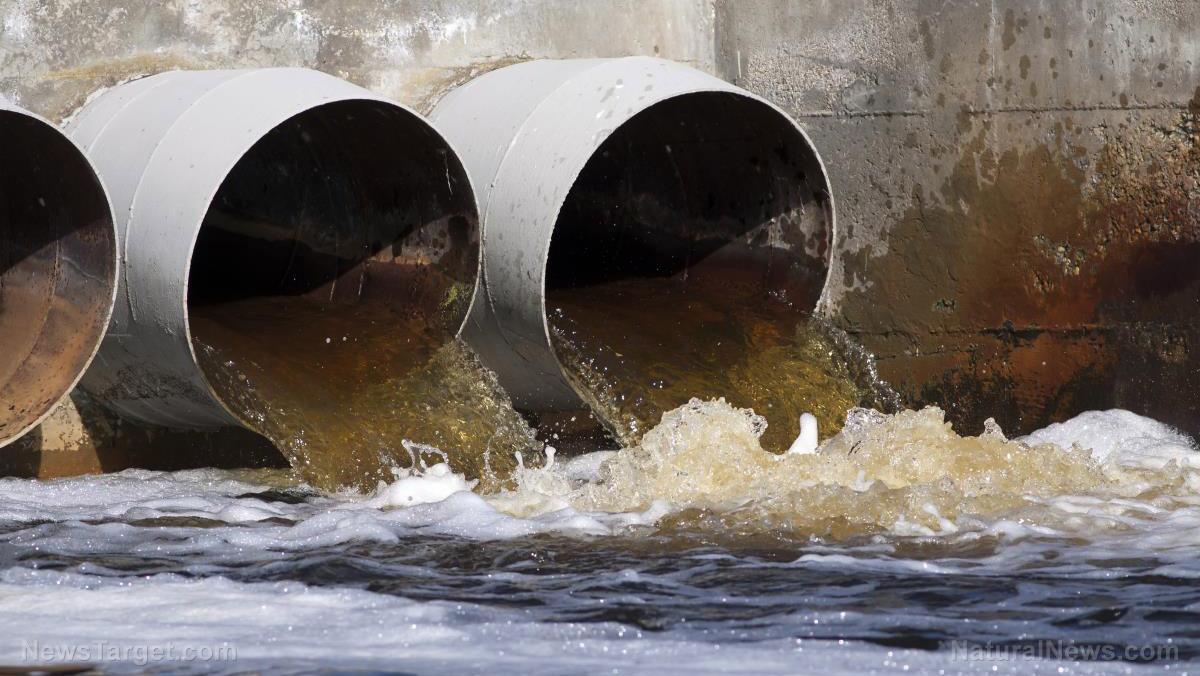Tracking wastewater is difficult: Artificial sweeteners turn out to be reliable chemical markers
02/19/2018 / By Zoey Sky

No one really thinks twice about the wastewater generated by sinks and toilets, but a team of Canadian scientists has recently discovered an unusual way to track the water “to ensure it doesn’t end up in unwanted places.”
John Spoelstra, a research scientist with Environment and Climate Change Canada, says that artificial sweeteners “are very specific to wastewater” and that there are very limited “possible sources in the environment.”
Since artificial sweeteners have a higher concentration compared to other wastewater markers, they’re easier to detect. They take longer to break down, and artificial sweeteners are “always present in wastewater.” He adds that to date, there haven’t been wastewater samples without any trace of sweeteners. (Related: 5 Artificial Sweeteners that are Really Bad for the Health.)
The scientists studied water from two sources located in rural areas in Alliston, Ontario. The first sample came from domestic water wells or privately-owned wells that supplied households with water. They also studied samples from groundwater seeps or springs. The researchers used the artificial sweeteners as a flag, and they ran tests to determine if septic system water ended up in the sources.
At least 30 percent of the wells and springs had traces of one or more of the four artificial sweeteners they were looking for. About 3.4 to 13.6 percent of the domestic wells had one percent or more of their water “coming from the output of a septic system.” Meanwhile, the springs only contained two to 4.7 percent.
Spoelstra continued that while these sweeteners in groundwater are not usually a human health concern, their presence indicates that there are also traces of wastewater, which could “contain other chemicals or bacteria of concern.” He adds that since groundwater ends up in streams and lakes, the contamination of groundwater can still influence surface water quality. Spoelstra also cautions that it is unknown if artificial sweeteners can affect “most organisms in the water.”
The scientists also revealed that they haven’t checked if the wastewater contained bacteria and that these artificial sweeteners are “considered safe to eat” by the Canadian government. The results also showed that the septic systems are not the main source of pollutants like nitrates, which are present in local groundwater.
Septic systems are common outside of large cities, and waste from a household goes into the underground septic tank. The wastewater is then treated and broken down by a mixture of bacteria. Treated wastewater is released into the soil, and it may be “further filtered or treated.” The wastewater can also end up in local groundwater.
In urban areas, sewage treatment plants treat wastewater. The wastewater is treated before it goes back into the environment, but it still contains artificial sweeteners since they can be hard to remove. This may be one reason why they end up in the water supply.
Spoelstra commented, “Regular inspection and maintenance of septic systems and groundwater wells should be done to identify and fix possible problems. He continued, “Homeowners should also have their raw well water tested for bacteria at least once per year.”
How to minimize wastewater
You can also try to minimize the wastewater that you produce at home by following the steps listed below:
- Do regular leak hunts – A 1/16-inch opening in the faucet could waste 100 gallons of water a day. Thoroughly check your home monthly for “dripping faucets, shower heads, hoses, and sprinklers.” Most faucet drips can be fixed by replacing an overused washer.
- Take your car to the local car wash – It’s the thought that counts, but you waste more water if you wash your car yourself.
- Use a bucket when showering – You could capture a gallon or more of water, which can still be used to water your plants.
- Use a dishwasher instead of doing the dishes by hand – Washing dishes by hand is more wasteful than using your dishwasher. The former wastes about 27 gallons of water per load and the latter only consumes about three gallons if it is an ENERGY STAR-rated dishwasher. Scrape off food scraps instead of rinsing each dish before you load it.
You can learn more about other fascinating scientific reports at WeirdScienceNews.com.
Sources include:
Tagged Under: artificial sweeteners, Biosludge, chemical sweeteners, Chemistry, clean water, Effluent, environment, environmental science, ingredients, lab analysis, Septic Tank, sweeteners, wastewater, water quality




















